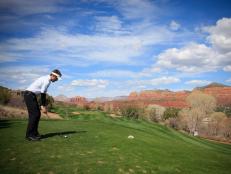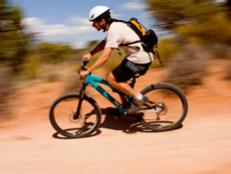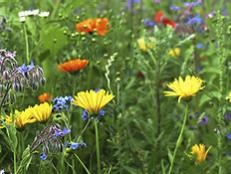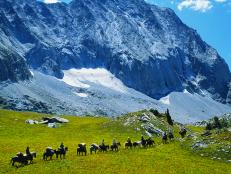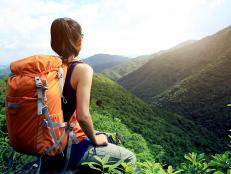10 Reasons Why Seattle Should Be On Your 2020 Adventure List
From urban excitement to wilderness treks, the Emerald City is a gem for adventurers.

Related To:
lessRelated To:
Sea to Summit Adventures
With its Mediterranean climate, Seattle is perfectly positioned for adventure on the ocean or in some of the highest mountains in the Lower 48. Sitting on the Pacific Ocean's Puget Sound, this port city is surrounded by the volcanic Ring of Fire that has created summits including 14,411-foot Mount Rainier two hours south of Seattle. From year-round glaciers to water sports, Seattle's diverse topography and temperate weather make this one of the nation's best getaways for outdoor adventure. Here are just a few of our recommendations for upping your adrenalin and appreciating the natural diversity of this beautiful region.
Summit Mount Si
Mount Si, 32 miles east of Seattle via Interstate 90, is a favorite local hike both for its access and views. A relatively easy 8-mile round trip hike gains 3,150 feet of elevation, topping out at 3,900 feet. The trail winds through old and newer-growth forests that are home to animals including mountain goats. At the top, views sweep the Snoqualmie Valley, Seattle to the west, and the Olympic Range. Mount Si makes a great introduction to hiking in the Cascade Range, and it’s said that if you can summit here in two hours or less, you can take on Mount Rainier. Your mileage may vary.
Climb Mount Rainier
Feel ready for the mountaineering big-time? Scraping the sky at 14,411 feet, Mount Rainier is the fifth-highest mountain in the lower 40 states and the highest in the Cascades. It's an inactive volcano, but covered in glaciers year-round. Called Tahoma by the indigenous Salishan-speaking peoples, Mount Rainer is located 59 miles south of Seattle in Mount Rainier National Park. There's plenty of hiking, climbing and outdoor beauty here, but if you'd like to summit this gorgeous peak grab your crampons and call RMI Expeditions, where guides such as Zeb Blais and Dave Hahn will help you reach the top.
Kayak With Orcas
Orcas, killer whales, sea pandas — whatever you like to call them, these intelligent, personable cetaceans delight kayakers near the San Juan Islands. Sea Quest Expeditions, Crystal Seas Kayaking and San Juan Outfitters will get you next to these gentle giants. For mellow paddling within Seattle city limits, Alki Kayak Tours offers stunning views of Seattle's skyline from the water.
Skydive Above the Cascades
Here's an easy way to see the summits of the Cascades and still be on time for dinner. Skydive Snohomish an hour north of Seattle flies you to 12,000 feet, where you step out of the plane while attached to a highly qualified parachuting professional. Your parachuting buddy gets you safely to the ground while you take in the exalted views of the Cascade Range below.
Skywalk on the Space Needle
Seattle's iconic Space Needle recently underwent renovations that include clear observation perches and the world's only rotating glass floor, both of which make it seem like you're floating 520 feet above Seattle (the tower's total height is 605 feet). This is plenty exhilarating for many, but for more of a rush, consider a Halo Walk outside the perimeter of the saucer-shaped observation deck. You'll be harnessed safely to a cable as you walk outside with nothing but fresh air, amazing views and adrenalin. The catch? This unique experience is only open to a handful of people who participate in the annual Base 2 Space Seattle fundraiser for the Fred Hutchinson Cancer Research Center.
Paraglide From Poo Poo Point
Leap from Poo Poo Point atop Tiger Mountain and ride the thermals like an eagle, attached to a paragliding pro. Stunning views of Mount Rainier, Seattle and the Puget Sound stretch below as you basically sit in a hammock thousands of feet in the air. Located 20 minutes east of Seattle in Issaquah, Seattle Paragliding makes this experience safe, simple and definitely memorable.
Hike the Pacific Crest Trail
The Pacific Crest Trail travels some 2,600 miles from California to British Columbia, Canada. More than 500 of those miles are in Washington, passing through the jaw-dropping scenery of North Cascades National Park, Mount Rainier National Park, Glacier Peak Wilderness, Goat Rocks Wilderness, Alpine Lakes Wilderness and Mount Adams. Kendall Katwalk, an hour east of Seattle via Interstate 90, is a PCT section that passes through mountains, meadows of wildflowers and old-growth forests. Don't feel like you have to hike the entire PCT in Washington; plenty of small sections will give you a taste of the trail and the beauty of the state, just a few hours outside of Seattle.
Coast the Cascades or Hit the Backcountry
Steep mountains and epic powder make Washington a skier’s paradise. Ski areas and resorts such as Crystal Mountain Resort about an hour-and-a-half southeast of Seattle in the shadow of Mount Rainier offer terrains for all levels of skiers and riders. If you'd like to go from groomers to backcountry, guide services such as North Cascades Mountain Guides will take you into the wild for adventurous ascents and thrilling lines.
Go With the Flow Trail
Mountain bikers will love ripping trail at any one of several mountain bike parks just outside of Seattle. Bank through old-growth forests at Duthie Hill Mountain Bike Park and Grand Ridge near Issaquah, Soaring Eagle Park near Sammamish, and Tolt MacDonald Park near Carnation. Single track, berms and features flow through the forests. Trails range from green beginner to double-black experts-only. Visit Evergreen Mountain Bike Alliance for more information.
Explore Mount Saint Helens' Lava Tubes
Mount St. Helens, 96 miles south of Seattle, will always be associated with the devastating eruption of 1980. Today, Mount St. Helens National Volcanic Monument is a peaceful national park surrounding the stratovolcano with more than 200 miles of trails for day hikes and backpacking. Johnston Ridge Observatory details the natural and human history associated with Mount St. Helens, and technical and non-technical mountain climbing to the active volcano's crater rim at 8,365 feet is allowed with a permit. Explore the fascinating lava tubes beneath the landscape at Mount St. Helens. Ape Cave is the third-longest lava tube in North America at 13,042 feet. It formed when molten lava from Mount St. Helens flowed like underground rivers, leaving tubes of hardened basalt. It's a great adventure for all ages and experience; make sure to wear sturdy shoes and bring two to three light sources per person.


